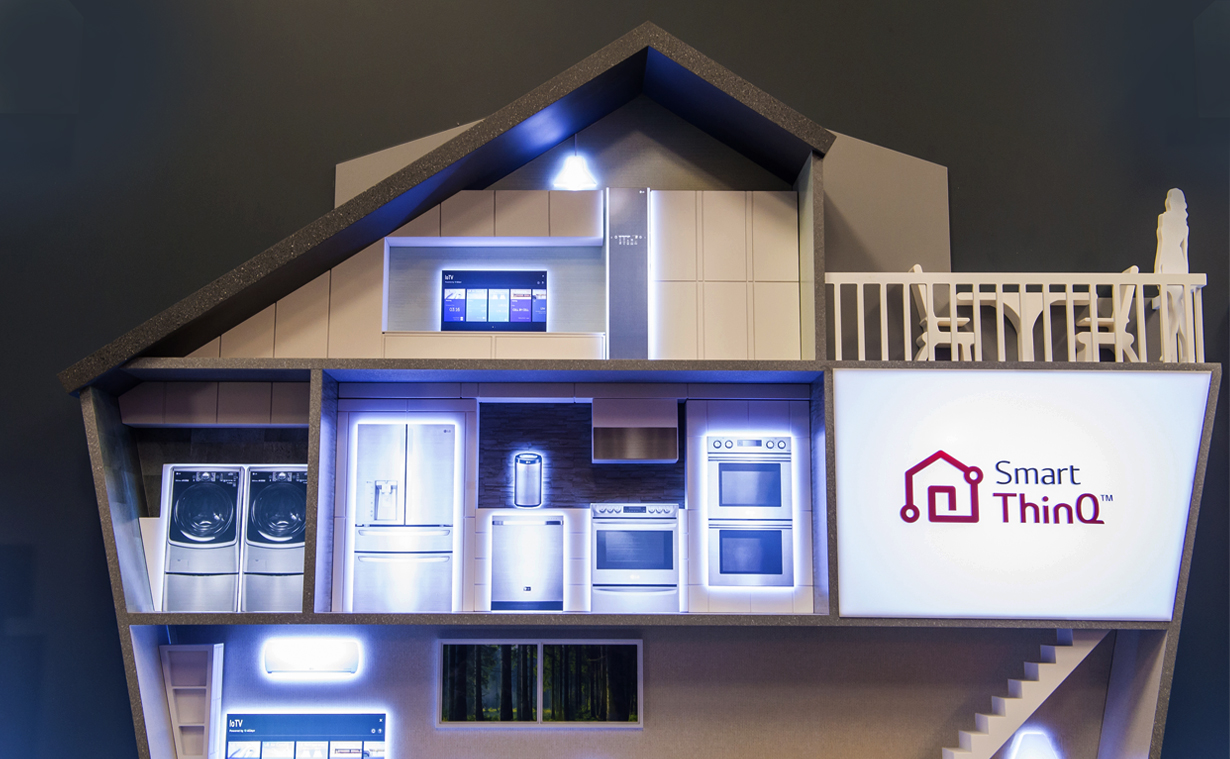
4 New ICT Trends at CES 2016
the world’s largest electronic appliances exhibition sponsored by the CEA (Consumer Electronics Association) of the United States.
Marking the 49th anniversary in 2016, the CES presented a notable change:
the name of the sponsoring institution was changed from the CEA to CTA (Consumer Technology Association).
This indicates that the exhibition will now introduce not only home appliances, but also a wide range of future technology and products for consumers.
The 2016 event can be characterized by the rapid increase in automobile-related exhibitions, generalization of wearable devices,
initiation of competition among products based on IoT standards, and the emerging power of China.
Automobiles transforming to wheeled computers


Generalization of wearable devices for fitness and healthcare
The fitness and sports industry is developing products to make the best wearable devices, and many participating companies at the CES demonstrated a range of products not only for the wrists but also for other body parts. In many cases, new various sensors were introduced in order to measure new meaningful information. Also, a number of products for pets as well as infants and children reflect the continuously expanding applications of wearable devices. Intel demonstrated a helmet embedded with a micro-display that recognizes objects in industrial sites and instructs the wearer how to control them. Another trend is that efforts to improve the accuracy of measured data and make measurement indexes will result in increasing demand for standardization to ensure data integration and sharing. In the wellness industry, personal wellness devices for preventive purposes were displayed more than healthcare devices intended for treatment and medical services, and the market is expected to expand to meet such demand. AI technology such as IBM’s Watson will develop into more elaborate and personalized health monitoring and predicting services. As traditional watchmakers showcased differentiated products featuring connection with outdoor clothing, luxury products, and fitness, competition in the smart watch market is anticipated to accelerate further.

Competition begun for IoT standard-based products
Power of China
Statistics attest to the power of China: more than 1,200 businesses of over 3,600 participants at the 2016 CES came from China. In particular, with the participants from the expanded Chinese region (Hong Kong and Taiwan) combined, the number approached 1,600. In the industry of high-end appliances, Chinese companies such as Huawei, Haier, and ZTE are actively running after Samsung and LG Electronics. A number of Chinese small companies also set up their own booths and publicized their products and technology. In the section for drones, nearly 90 percent of the participants were Chinese companies, and the market for drone-related technology also showed the remarkable leadership of Chinese businesses. Korea’s future ICT market will be defined by efforts to acknowledge China’s growing competitiveness both in manufacturing and technological development and establish proper measures to respond to those competitors.

